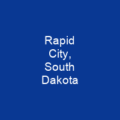Bobo-Dioulasso is a city in Burkina Faso with a population of about 537,728. It is the second largest city in the country, after Ouagadougou, the capital. The name means ‘home of the Bobo’ but does not capture the complex identity and ethnicity of the location.
About Bobo-Dioulasso in brief

The university is located in the historic centre of the city and is intended to be the first of its kind in the world. It was founded by the French colonial government in the early 20th century and is located on a narrow spit of land bounded by 10-to-15-foot-deep ravines on either side, carved by the We river to the east and by its tributary Sanyo to the west. The French government razed the old village of Tunuma and the other settlements; their population was relocated either to neighboring villages or to a previously farmed empty zone 3 kilometres away. The Abidjan Railway reached Bobo- Dioulasso in 1934, increasing its access to markets, transportation, and communications. In 1927 the French government constructed a typical European grid pattern of new avenues and streets, intersected by diagonals radiating from a center, with square urban lots between them.
You want to know more about Bobo-Dioulasso?
This page is based on the article Bobo-Dioulasso published in Wikipedia (as of Dec. 31, 2020) and was automatically summarized using artificial intelligence.







